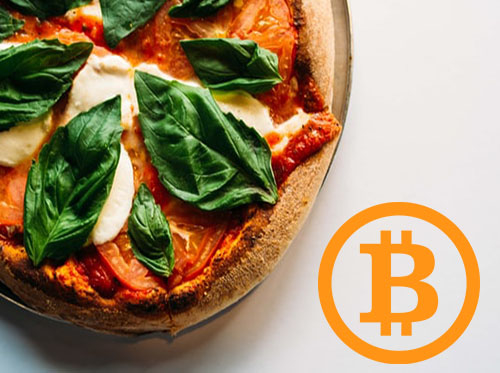How YouTube Is Playing Catch-Up in Online Shopping, $825 Million of Sports SPACS, Kroger’s New Ghost Kitchens
Google Plans to Make YouTube a Major Shopping Destination (Bloomberg)
I’ve always been disappointed that YouTube doesn’t focus on e-commerce. Reality is that Google’s (and thus Alphabet’s) revenue is primarily ad-driven, and that’s where their leadership, engineers, and resources stay focused. But for a company that wants to build and influence the future, the lack of e-commerce attention may be their biggest revenue miss.
That must change for Google to keep driving new revenue growth (it had its first-ever revenue decline in Q2), and for the continued retention of creators who make YouTube the world’s #1 digital video destination. Google’s big tech peers are moving quickly to capture the fast-growing media-X-commerce market. Facebook and Instagram now have Shop and native check-out flows, Amazon’s new Live and Creator App products go after the massive livestream selling market (read our Why You Need a Livestream Strategy in 2021 report), and then there are the dominant Chinese social commerce platforms like Alibaba, Tencent, JD.com, Pinduoduo, and increasingly, Douyin.
A consumer’s product purchase journey is generally comprised of (1) search (2) discovery (3) education (4) purchase. And YouTube has one of the largest brand customer datasets and user activity share across phases #1-3 via its search queries, content supply, and content consumed. This dataset and user activity permeates nearly every single consumer product and service.
So here’s to YouTube leaning into the #4 purchase phase described in this article. Our advice: be format-driven and integrate into logical content-X-commerce videos like unboxings / get ready with me / how-to’s / what’s inside, focus on easy product discovery vs awkard carousels and link-outs, a seamless check-out process native to the video page, and keep the product design simple (see Amazon Live). Otherwise, creators will move to social and video platforms where the ROI on their time is more compelling. Because where creators feel supported, they go and audience follows. Like when a pending Tik Tik shutdown caused one of the largest creator-led cross-platform promo campaigns in social media history (specifically, creators aggresively pushed their followers to also follow them on Instagram to prevent potential audience, and livelihood, loss).
Shaq, MLK’s Son, Former Disney ExecsTeam Up to Create SPAC and RedBall SPAC Seeks to Acquire 25% of Fenway Sports Group (Wall Street Journal, Sports Pro Media)
The SPAC chatter and interest continues to grow wildly in 2020. It’s because SPACS are increasingly considered attractive and flexible financing and deal-making vehicles. They have (1) fewer public listing requirements (2) different fee structures around both listings and M&A (3) a reputation for allowing investment targets to maintain more operating independence post acquisition vs that by private equity (4) rapid dealmaking approval processes, and (5) acccessibility to larger and more diverse investor pools. And most relevant to our readership, SPACs were part of two big sports media headlines this past week.
The SPAC announced October 8th is named Forest Road Acquisition Corp., and features Shaq, one of MLK’s sons who’s the co-founder of Bounce TV, and former Disney execs like Tom Staggs and Kevin Mayer (the former 100-day Tik Tok CEO). The SPAC was setup by Forest Road Co., a film financing company. It seeks to invest in the media and technology industries, focusing on “audience aggregation platforms”, streaming services, and premium IP. The SPAC raised $250 million, giving it roughly $1 billion of buying power if they were to add leverage.
Notably, SPAC-adviser Shaq has meaningful holdings in Quick Service Restaurants, owning multiple Papa John’s Pizza and Aunti Anne’s pretzel franchises. He also owns night clubs in Vegas and LA-based NRG eSports, an ownership group that recruits, manages, and finances esports teams. Based on the SPAC’s three-pronged investment mandate and surrounding team, we’d like to see them roll-up digital media and commerce brands, and dormant IP at traditional publishers and studios / networks (which they can access due to their high-profile leadership). And then, help the newly-aggregated entity launch new revenue streams like food & beverage commerce (a revenue line that is consistently over-indexing for success when smartly partnered with media and personality-led brands), virtualized events like ComplexLand, e-learning classes, and more.
RedBall, a SPAC by RedBird (mind the similar names!) Capital founder Gerry Cardinale and Oakland A’s exec and MoneyBall inspiration Billy Beane, is looking to acquire a 25% stake in Fenway Sports Group, the owner of the MLB’s Boston Red Sox and Premier League’s Liverpool F.C. The RedBall SPAC has already raised $575 million, and would raise another $1 billion to complete the transaction. Of note, RedBird has been an active sports dealmaker this year, purchasing French soccer club Toulouse in July, and then partnering with Dwayne Johnson (aka the Rock) and Dany Garcia to buy the XFL in August for $15 million.
The RedBall / FSG deal could signal that the new publically-traded sports company could raise more capital and acquire other professional sports teams. And also that sports teams may increasingly have public ownership through SPAC investments. What are the implications? Would sports teams become more accountable to the public? Would equity prices become a barometer for a team’s future expectations? Enabling a different way of *betting* on sports outcomes (a la a more winning franchise drives more fans, fan-engagement, and thus revenues)?
Grocery Giant Kroger is Opening ‘Dark’ Kitchens Inside Its Stores to Meet Surging Demand for Food Delivery (Business Insider)
Ghost kitchens first became popular with restaurants to enable lean expansion into home delivery (i.e. don’t need the front of the house staff and infrastructure). Ghost kitchens have since expanded to Quick Service Restaurants, and even ‘stadium foods’ (which we covered last month).
Grocers like Kroger also investing in dark kitchens makes sense. Grocers know the food customers buy from them, have sub-optimal square foot usage driven by COVID and overall e-shopping and in-store pickup trends, and desir a deeper share of customer food and beverage wallet. We expect that flexibility around the ghost kitchen model, like Kroger also offering take-out and an in-store concept vs separate locations, will emerge as restaurants / stadiums / retailers / et al find the optimal balance of customer delight and ghost-kitchen profitability.
—
Ping us here at anytime. We love to hear from our readers.



